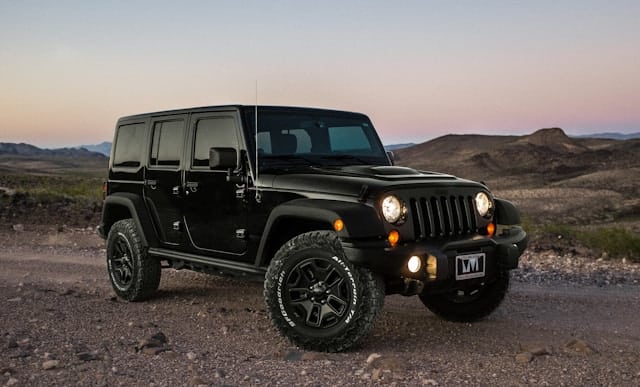Can a Gear Ratio Swap Improve the Off-Road Capabilities of a Jeep Wrangler?

When it comes to off-roading, your Jeep Wrangler will face a variety of challenging conditions that put the vehicle’s performance to the test. One component that plays a critical role in your Jeep’s off-road prowess is the gear ratio. In this piece, we delve into the intricacies of gear ratios and how swapping these can significantly improve your Wrangler’s off-road capabilities.
Understanding Gear Ratios in Your Jeep Wrangler
Before getting into the details of a gear ratio swap, it’s essential to understand what gear ratios are and how they function in your Jeep Wrangler.
In the same genre : What’s the Best Way to Install a Performance Chip in a Toyota Tundra for Enhanced Torque?
Jeep Wranglers, like any other vehicle, rely on a complex system of gears in the transmission and the axle to control the power output from the engine to the wheels. The gear ratio is a numerical value that indicates the relationship between the gears in the transmission and the gears in the axle.
Here’s how it works: For example, if your Jeep Wrangler has a gear ratio of 3.73:1, this means that for every 3.73 rotations of the transmission’s output shaft, the vehicle’s tires will make one complete rotation. This ratio significantly influences how your Jeep performs, affecting everything from fuel efficiency (mpg) to towing capacity and off-road control.
Have you seen this : Discover the allure of online mystery boxes and their surprises
The Relationship Between Gear Ratios and Tire Size
Tire size is another crucial variable to consider in this equation. When you change the size of your Jeep Wrangler’s tires, it directly impacts the vehicle’s gear ratio.
Here’s how: Bigger tires require more power to rotate, meaning the engine must work harder. This increase in workload can affect your Jeep’s performance, reducing acceleration and fuel efficiency (mpg). You might find that your Wrangler doesn’t have the same "get up and go" that it used to.
This is where a gear ratio swap comes into play. By adjusting the gear ratio, you can compensate for the change in tire size, ensuring that your Jeep retains its performance capabilities. This swap essentially re-balances the vehicle’s power distribution, ensuring that your Wrangler has the right amount of power at the wheels, regardless of tire size.
How a Gear Ratio Swap Improves Off-Road Performance
Off-roading demands a lot from your Jeep Wrangler. From navigating steep inclines to grappling with loose, uneven terrain, your vehicle needs to have the power and control necessary to tackle whatever the trail throws at it. A gear ratio swap can significantly enhance your Wrangler’s off-road capabilities.
By increasing the gear ratio, your Jeep can provide more low-end torque, which is incredibly beneficial for off-roading. More torque equals more power at low speeds, which means your Wrangler will have the raw strength it needs to crawl over rocks, climb steep hills, and traverse rough terrain. Moreover, a higher gear ratio gives you better control over your vehicle at low speeds, which can be a lifesaver when navigating tricky obstacles.
The Process of Swapping Gear Ratios
Swapping gear ratios isn’t a simple task. It involves changing both the pinion gear and the ring gear in your vehicle’s front and rear axles.
Professional installation is usually recommended for this procedure, as it requires specialized tools and knowledge to carry out correctly. If you’re comfortable working on your Jeep and have the necessary tools, you can find resources on various Jeep forums online that provide step-by-step guides. However, if you’re not mechanically inclined, it’s best to leave this task to the professionals.
Before embarking on a gear ratio swap, it’s important to determine the optimal gear ratio for your vehicle. This decision will depend on several factors, including the size of your tires and the primary use of your Wrangler (i.e., whether you use it mainly for off-roading, daily driving, or a combination of both). A professional can help you make this determination, ensuring that you select the best gear ratio for your needs.
Remember that a gear ratio swap is a significant modification to your vehicle. While it can dramatically improve your Jeep’s off-road capabilities, it’s essential to weigh the potential benefits against the cost, effort, and potential risks associated with this modification.
The Impact of Gear Ratio Change on Other Components
Switching to a higher gear ratio doesn’t just affect your Jeep’s performance. The changes also impact other components in your Wrangler, particularly the transfer case and axle shafts.
The transfer case is a part of your Jeep’s drivetrain that splits the power from the engine between the front and rear axle. A change in gear ratio can alter how this power is distributed, requiring that the transfer case operates differently.
Additionally, axle shafts, which transmit power from the differential to the wheels, may also be affected. These shafts are designed to handle a specific amount of torque. Changing to a higher gear ratio can increase the amount of torque the axle shafts have to manage, which could potentially lead to premature wear if they aren’t up to the task.
For this reason, it’s crucial to ensure that both the transfer case and axle shafts are capable of handling the increased load. You might consider upgrading these components at the same time as the gear ratio swap, particularly if you’re planning on doing a lot of off-roading.
Other components, such as skid plates and the sway bar, may also need to be considered during a gear ratio change. Skid plates provide protection for the undercarriage during off-road excursions, and the sway bar helps maintain vehicle stability. Therefore, it’s crucial to ensure these parts are compatible with the new gear ratio.
Conclusion: Is a Gear Ratio Swap Worth It?
While a gear ratio swap can dramatically enhance your Jeep’s off-road capabilities, it’s not a decision to be made lightly. The process is complex, potentially expensive, and requires significant mechanical knowledge or professional installation. It will also directly impact several other components in your Jeep, including the transfer case, axle shafts, skid plates, and sway bar.
Still, if you’re serious about off-roading and want to ensure your Wrangler can handle anything the trail throws at it, a gear ratio swap could well be worth the investment. Paired with larger tires, a higher axle ratio can provide more low-end torque, improve control at low speeds, and help your Jeep tackle steep hills and rough terrain with ease.
Ultimately, whether a gear ratio swap is right for you will depend on your specific needs and circumstances. If you’re using your Jeep Wrangler mostly for city driving, the change may not be necessary. However, if you’re a dedicated off-roader, swapping your gear ratio might just give your Wrangler the extra edge it needs to conquer any trail.
In any case, it’s advisable to seek professional advice before making any significant modifications to your vehicle. They can help you weigh the potential benefits against the costs and risks, ensuring you make the most informed decision possible. After all, owning a Jeep Wrangler is about enjoying the journey—both on and off the road.
